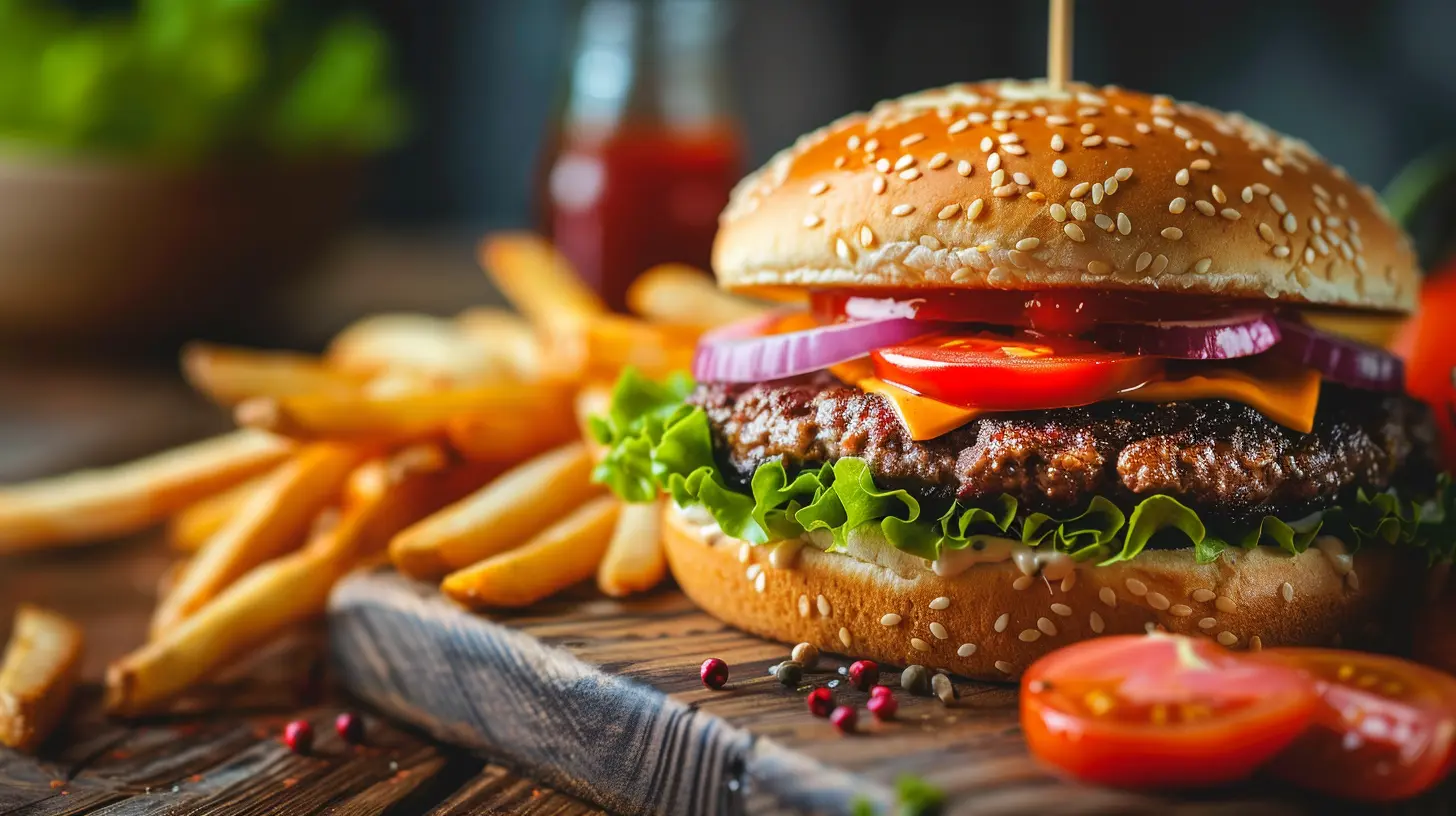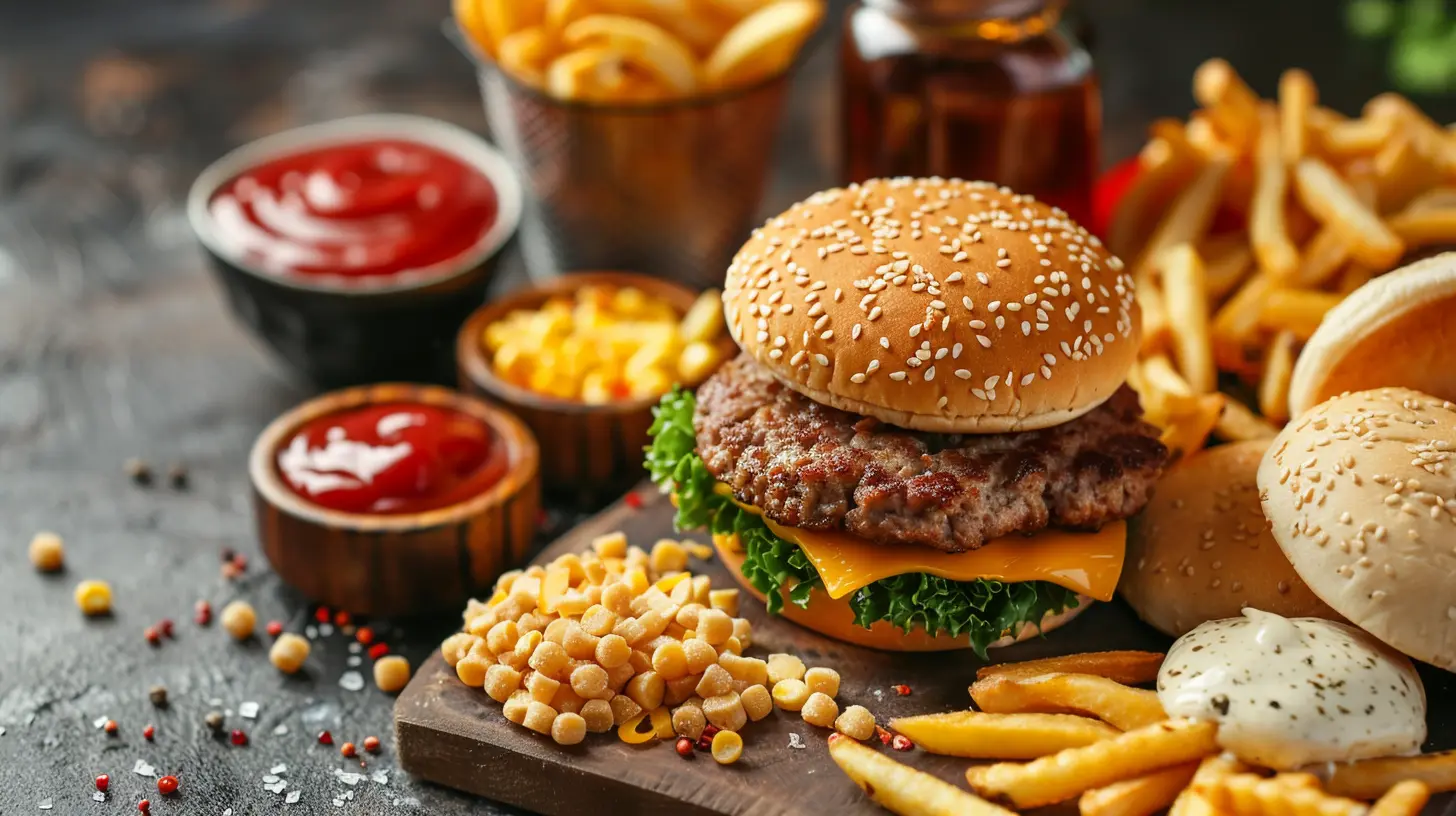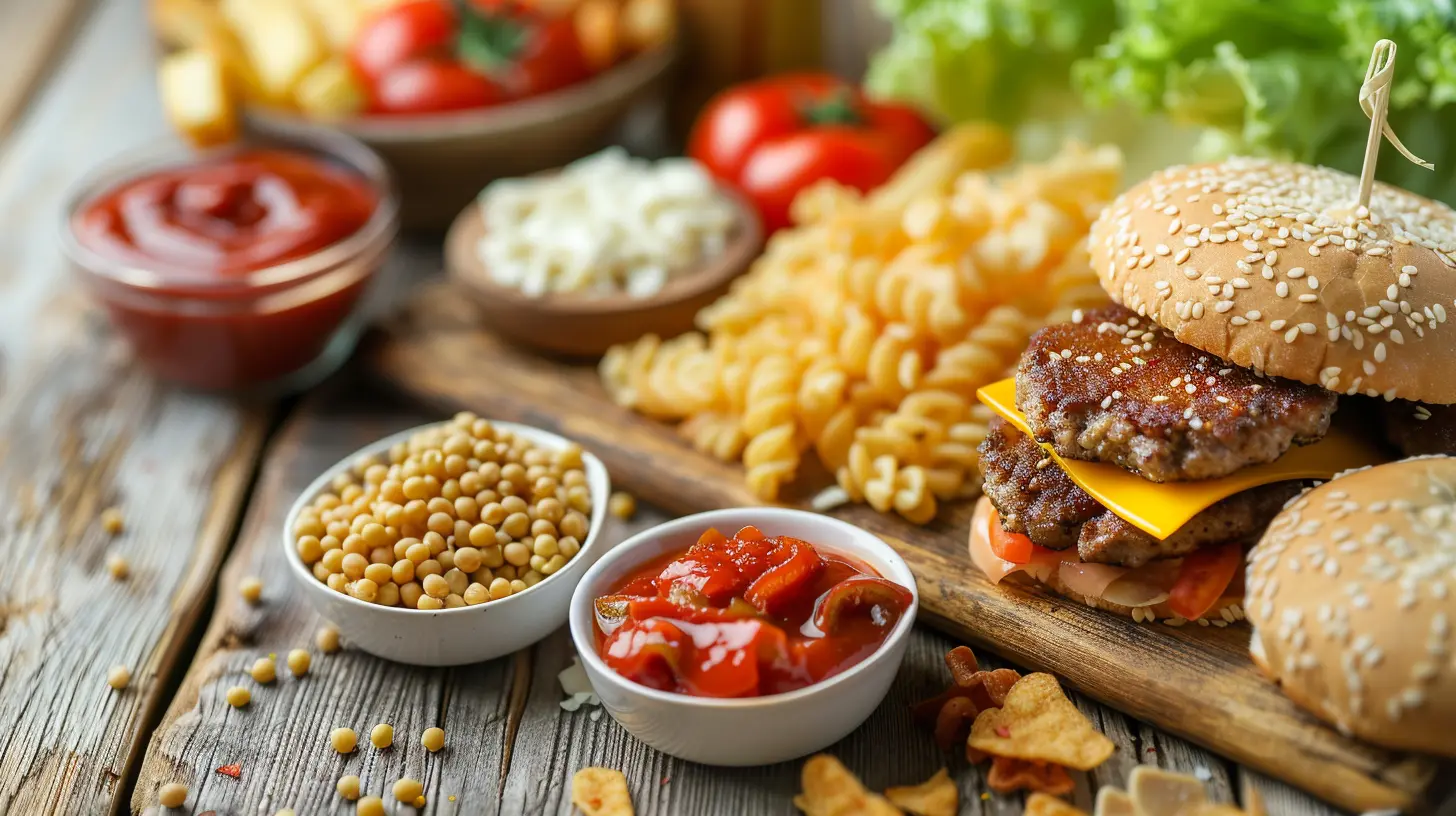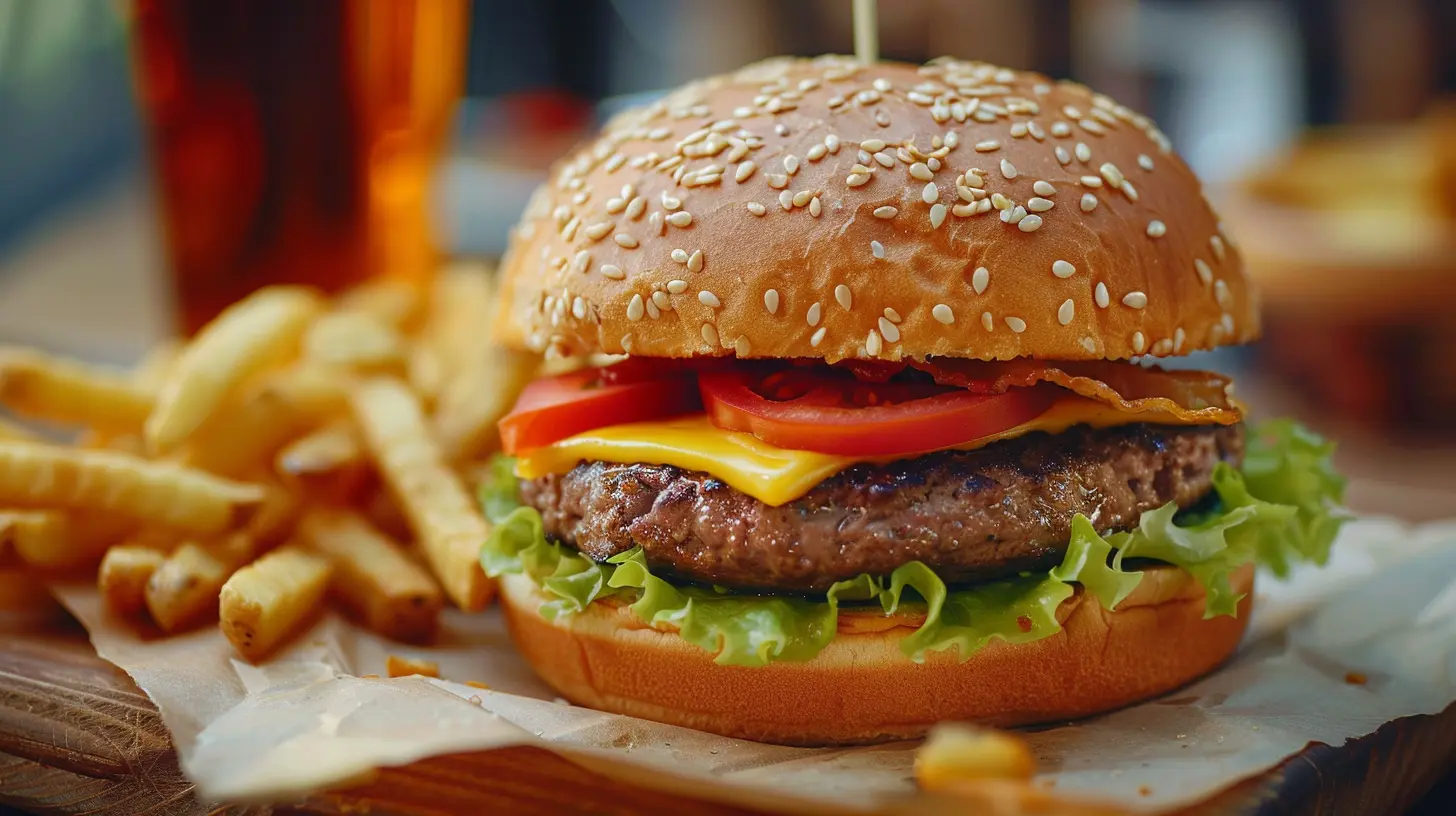Fast Food and Cholesterol: How to Make Healthier Choices on the Go
22 October 2025
Let’s be real—fast food is everywhere. It's quick, convenient, and often surprisingly delicious. Whether you're dashing between meetings, picking up the kids, or just plain too tired to cook, fast food becomes the go-to. But there’s a catch: most fast food is loaded with things your heart doesn’t necessarily take kindly to—especially cholesterol.
We all know high cholesterol is a bad guy when it comes to heart health. But does that mean you're doomed to avoid burgers and fries forever? Not necessarily.
In this no-fluff, straight-talking guide, we’ll dive into how fast food affects your cholesterol, and more importantly, how you can make smarter choices without giving up convenience.
What Is Cholesterol Anyway?
Before we start pointing fingers at burgers and milkshakes, let’s get to know the “villain” of the story.Cholesterol is a waxy substance your body actually needs. It helps build cells, produces hormones, and even supports vitamin D production. The problem pops up when we have too much of the “bad” kind—LDL (low-density lipoprotein). That’s the stuff that clogs arteries like a slow-draining sink.
Then there’s HDL (high-density lipoprotein), the good kind. Think of HDL as the cleanup crew that helps flush the bad stuff out.
So, how does fast food fit into all this? Let’s break it down.
Why Fast Food Gets a Bad Rap
Fast food is often high in:- Saturated fats
- Trans fats
- Sodium
- Refined carbs
- Sugar
These ingredients—especially saturated and trans fats—are major contributors to increased LDL cholesterol. That’s not just bad news for your heart, but also your blood pressure, weight, and general well-being.
But Wait—Not All Fast Food Is Evil
Yup, you read that right. Fast food doesn’t have to be a heart attack waiting to happen. More restaurants are now offering healthier, more balanced options. The trick? Knowing what to look for and how to tweak your order.
How Fast Food Impacts Cholesterol
Let’s say you grab a cheeseburger, fries, and a chocolate milkshake—a pretty standard combo. This meal can easily contain:- Over 70g of fat
- 25g+ of saturated fat
- 1000+ calories
- More sodium than you should eat in a day
Now, the American Heart Association recommends limiting saturated fat intake to about 13 grams per day on a 2,000-calorie diet. So yeah, that one meal? Already off the charts.
And as if that isn't enough, trans fats—once common in fast food—are known to both raise LDL and lower HDL. Double whammy.
Can’t Quit Fast Food? Here’s How to Make Smarter Choices
We get it—life’s busy, and sometimes you just don’t have time to whip up a quinoa salad. So let’s not pretend like fast food isn’t going to happen. Instead, let’s talk strategy.1. Grilled Over Fried—Every Time
This one’s easy: grilled chicken sandwiches or wraps offer the protein punch without the greasy, trans fat-laden breading. Fried foods are a major cholesterol offender. Go grilled and your heart will thank you.2. Watch the Portion Size
Most fast food portions are way bigger than what you actually need. Consider this:- A large fries can hold more than 500 calories
- Upsizing your drink? That’s just liquid sugar (and empty calories)
Go small or even order from the kids’ menu. Seriously.
3. Skip the Extras
Cheese, bacon, mayo, creamy dressings—they sound tasty, but they’re packing saturated fats like there’s no tomorrow.Try these swaps:
- Ask for no cheese
- Replace mayo with mustard
- Ditch the bacon altogether
- Choose vinaigrette or low-fat dressings
4. Choose Whole Grains
Okay, we’re not saying you’ll find quinoa at your local drive-thru (though it’s starting to pop up!). But look for whole grain buns or brown rice options. Some places do offer them now.Whole grains add fiber, which can help lower cholesterol. That’s a win-win.
5. Opt for Water or Unsweetened Beverages
Sodas, sweet teas, and milkshakes don’t just add sugar—they often contain high fructose corn syrup, which can mess with your cholesterol and triglyceride levels.Stick to:
- Water
- Sparkling water
- Unsweetened iced tea
- Black coffee
6. Load Up on Veggies
Yes, even fast food joints have veggies. Salads, lettuce wraps, or extra tomato and onion on your sandwich can help balance things out.And fiber-rich veggies can help reduce bad cholesterol naturally.
Heart-Smart Fast Food Picks (By Restaurant)
Let’s give you some actual go-to options. Keep in mind menus change, so always double-check details.🔹 McDonald’s
- Grilled Chicken Sandwich (no mayo)- Side Salad with Low-Fat Dressing
- Apple Slices
- Bottled Water or Unsweetened Iced Tea
🔹 Subway
- 6-inch Turkey Breast on Whole Wheat- Load up on veggies
- Skip the cheese and heavy sauces
- Add mustard or vinegar
🔹 Chipotle
- Brown rice bowl with grilled chicken or tofu- Black beans (fiber boost!)
- All the veggies
- Salsa and guac (healthy fats)
🔹 Chick-fil-A
- Grilled Chicken Sandwich- Fruit Cup
- Side Salad with Light Italian Dressing
🔹 Starbucks
- Spinach, Feta & Egg White Wrap- Plain oatmeal with nuts and fruit
- Black coffee or unsweetened tea
Red Flags to Watch Out For
Even if something sounds healthy, it might not be. Here are a few sneaky cholesterol tripwires:- “Crispy” = Fried: Always go grilled.
- Creamy sauces/dressings: Full of saturated fat.
- Flavored yogurt or oatmeal: Usually packed with sugar.
- Breakfast sandwiches: Bacon, sausage, cheese—triple threat!
Meal Hacks: How to Build a Cholesterol-Friendly Fast Food Meal
Let’s build a sample meal, shall we?Bad Choice:
- Double cheeseburger
- Large fries
- Milkshake
Smarter Swap:
- Grilled chicken sandwich (no mayo)
- Side salad with vinaigrette
- Water
Another idea?
Breakfast Better Option:
- Oatmeal with fruit
- Black coffee
- Banana
Simple swaps can make a night-and-day difference.
Reading Nutrition Labels—Yes, Even on the Go
Most major chains now post their nutrition info online or right on the menu. Take a second to check:- Saturated fat: Aim for less than 10% of daily calories
- Trans fat: Should be 0 grams
- Sodium: Keep it under 1500–2300mg daily
- Sugar: The less, the better
It’s like having a cheat sheet for your health.
Lifestyle Tips Beyond Fast Food
While making better choices on the go is important, your day-to-day lifestyle matters just as much.- Get moving: Even a 30-minute walk can boost HDL.
- Add more fiber: Think beans, oats, fruits, and vegetables.
- Limit alcohol and quit smoking: Both can mess with cholesterol levels.
- Regular check-ups: Know your numbers—LDL, HDL, triglycerides.
Final Thoughts: Balance, Not Perfection
Look, none of us are perfect. Sometimes you just need that burger and fries. And guess what? That’s okay. Your body won’t fall apart from one indulgent meal. It’s the daily habits that shape your health.So instead of cutting out fast food completely, shift the mindset to balance. Make small, consistent changes. Choose grilled over fried, water over soda, and maybe skip the extra cheese.
Your cholesterol—and your future self—will thank you.
all images in this post were generated using AI tools
Category:
CholesterolAuthor:

Jackson Mahoney
Discussion
rate this article
1 comments
Veda Henson
I'm intrigued! What specific fast food options can truly help lower cholesterol while on the go?
November 5, 2025 at 3:23 PM

Jackson Mahoney
Look for grilled chicken salads, veggie sandwiches, or wraps with lean proteins. Opt for whole grain options and dressings on the side to keep saturated fats low.


